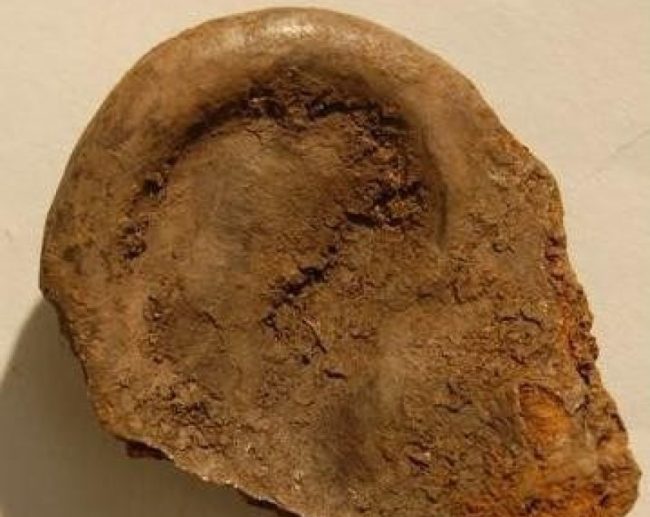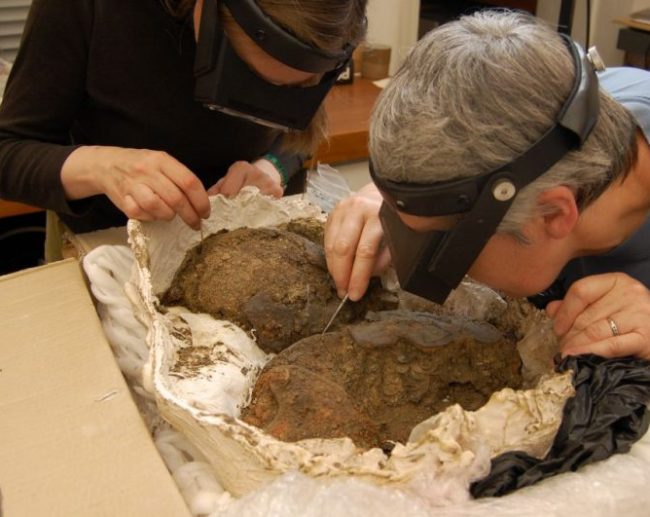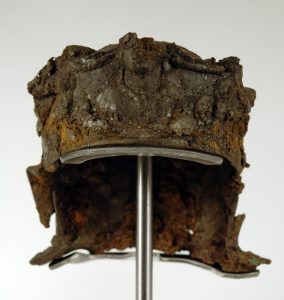The Hallaton Helmet
The Hallaton Helmet is part of the following collections: The Hallaton Treasure.
Found as part of the Hallaton Treasure, the helmet was buried at a native British shrine around the time of the Roman invasion of Britain which began in AD 43. This is a unique helmet which would have been worn by a Roman cavalry officer of high status.
The helmet has been reconstructed by conservators after suffering deterioration during burial. It is made of iron covered with very thin silver-gilt sheet which features beautiful designs on its surfaces created using a hammering technique called repoussé.
The decorated silver-gilt plating is of the highest quality. The helmet’s bowl features a wreath made of leaves, the symbol of a military triumph and the peaked brow-guard features the striking bust of a woman flanked by lions and rams.
The helmet would have originally had two cheekpieces hinged at the side to protect the side of the face. These survive separately as they are too fragile to re-attach to the helmet. The cheekpieces depict a Roman emperor on horseback with the goddess Victory flying behind. Beneath his horse’s hooves is a cowering figure, a defeated enemy.
What the native Iron Age people who buried this helmet make of this image of Roman dominance we do not know. Did they identify with the defeated foe or triumphant horseman? Does this suggest the local population were pro-Roman and received this helmet as a diplomatic gift of thanks to seal an alliance? It is an intriguing mystery but research is ongoing.
Highlights

The Hallaton helmet
View object
The helmet's brow-guard
View object
Discovery
View object
Ear
View object
The British Museum
View object
Excavating the helmet
View object















